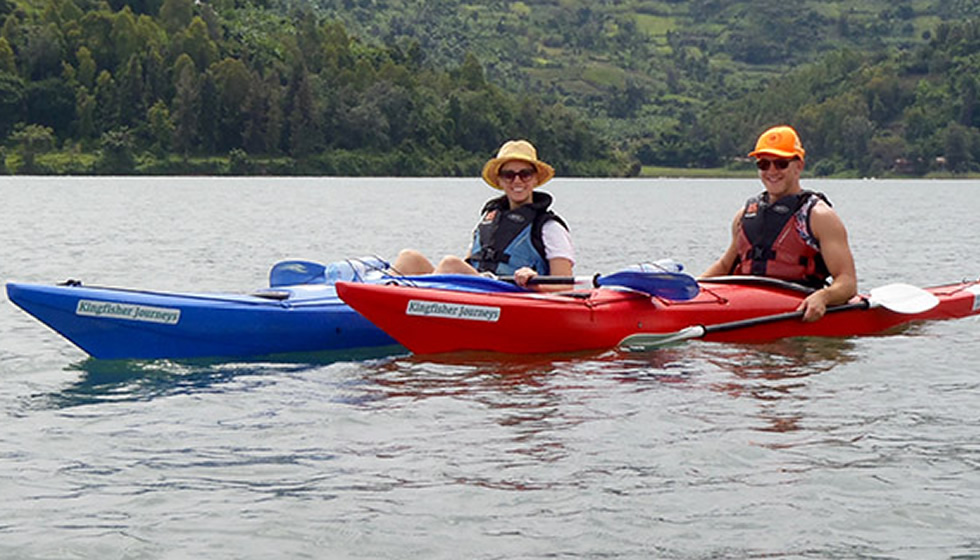
Kayaking on the Shores of Lake Kivu
Lake Kivu is shared between Congo and Rwanda on the Rwandan side it’s in Gisenyi and on the Congolese side it’s found in Goma.
On the Rwandan side is where you will find Kingfisher Journeys for an experience like no other, right from the warm and chatty reception from Steve Venton the Director himself to the kayaking guide who are both very friendly and ready to answer any questions you may have.
We got to paradise hotel where the kayaks park I should say, we (I, Joanna and Madyie) were taken to the shores of lake Kivu where we met with our kayaks blue yellow and orange that look bigger than they seem on television and in pictures, instructions are given to us on how to get in and set our feet and legs in the right angles and I’m there thinking what if my leg slips while on the lake but because I was with ladies I brave it out n keep my cool. So we are tutored on how to row forward, backwards, turning right, and left which seemed easy till it was time to get onto the lake.
Suddenly I felt so small the little waves on lake kivu kept bouncing me around as I rowed away from the shores, the really friendly guide was right there with us which gave gave me confidence that in case of anything there’s an expert with us who will get us out incase of anything, he then points to a little island that looked really far away. With the first couple of rows u feel like u aren’t moving then the pace starts to pick up after six to eight rows adrenaline kicks in as the momentum of the kayak explodes, with enough power in your arms and consistency you create a wash behind you, which is similar to raising dust while driving at high speeds on a dusty road.
Soon as I was blasting feeling like a pro at kayaking on my first day reality checked in as my unfitness checked in and I had to rest my arms, this however allowed me to enjoy the scene with the waves rocking the kayak the little island had eventually grown without me realising, looking back the shore had been left a great distance behind with my friends not far off as well, just as they were catching up with me, fishermen joined us on three conjoined canoes with their main guy in the middle leading them in songs of encouragement while the rest whistle and sing as they row into the night for they will be fishing all night long and return in the morning with the fish from the nights catch,as they set out to work something else is happening in the background, different species of birds are heading back to their nests from their daily activities as well, being part of this felt incredible like something straight out of a movie or one of those shows from national geographic television.
After that incredible exhilarating experience we were ready to get back to land n put our feet down for it was even getting dark. That day’s activities were done and there was still more in store for us by kingfisher journeys so we planned for the next morning. At about 9am we were on the shores of lake kivu once more it looked so calm, collected and so serene.
We then are told about journey for the day and we are in awe even before we set off. We get into our kayaks and this time round it’s a smooth breeze with no instructions needed but the excitement was still high for out there on the water u can easily forget about the rest of the world and what reality emphasises to keep reminding you of, for the moment all you can think about is rowing the kayak enjoying the winds on the lake and having a good time.
We managed to catch the last group of the fishermen return from their night fishing, one could hear the fatigue in their voices as they tried to encourage and motivate each other to keep going through whistling and singing in the local language which is kinyarwanda. Since we had set off early we had time to rest a bit on an island that’s associated to kingfishers journeys where we caught our breath enjoyed the beach sand, if only we had planned a picnic we could have stayed longer “oh well maybe next time” we told ourselves.
Our guide then points towards our next destination which were the hot springs what were brought about be nature(it’s a beautiful thing) on reaching the hot springs I realise it’s not what I would have expected in a million years, water from beneath the earth was overflowing to the surface while boiling hot, this made it safe to drink but of course I didn’t try that though I saw local collect it carefully and wait for it to cool a bit before they indulged.
What was amazing was what the locals had done with this gift from Mother Earth, try created baths on the shallow waters of lake kivu making sand banks where they would trap the hot spring water and let it mix with the cold water from the lake, this kept the water warm enough for people to sit on the sand banks and deep their feet in the warm soothing water just as we were enjoying that the locals surprised us more with natural massages where they would use the sand from the banks to scrub your desired body parts, we didn’t go for the full body massage which is also an option if you are up for it but we had our hands and legs massaged, it helped ease the stress on the muscles from the rowing but just before we left I was treated to a local sauna, water was collected into a basin.
I was told to squat and tilt my head right above the basin, I was then covered with towels and cloth to keep the steam and said nutrients in and for me to keep inhaling them without losing out too much for about 10-15 minutes. This is said to heal colds, hangovers for those that take part in the consumption of alcoholic drinks and it’s also said to excrete toxins from the body leaving you feeling fresh and energised.
After all this 5 star treatment at the local spa we expected a fee but to our surprise there was none( I know right, you probably thinking does this kind of hospitality still exist? Well yes it does) out of appreciation we decided to give thanks for the care and experience we had gone through. Time to go back and none of us want to row back we had found a little bit of the garden of Eden on lake kivu for it really took you away from the noise of an urban setting fresh cool air, no noise pollution, no congestion, just looking at this world we live in in its truest and natural form.
The world there seemed to be a century back to the least. Leaving for the shores and to the end of our experience on lake kivu was a bitter sweet moment filled with mixed emotions in the air as we appreciated a wonderful time but were saddened by the reality check that we had come to the end of this short but unique and wonderful journey.
Read More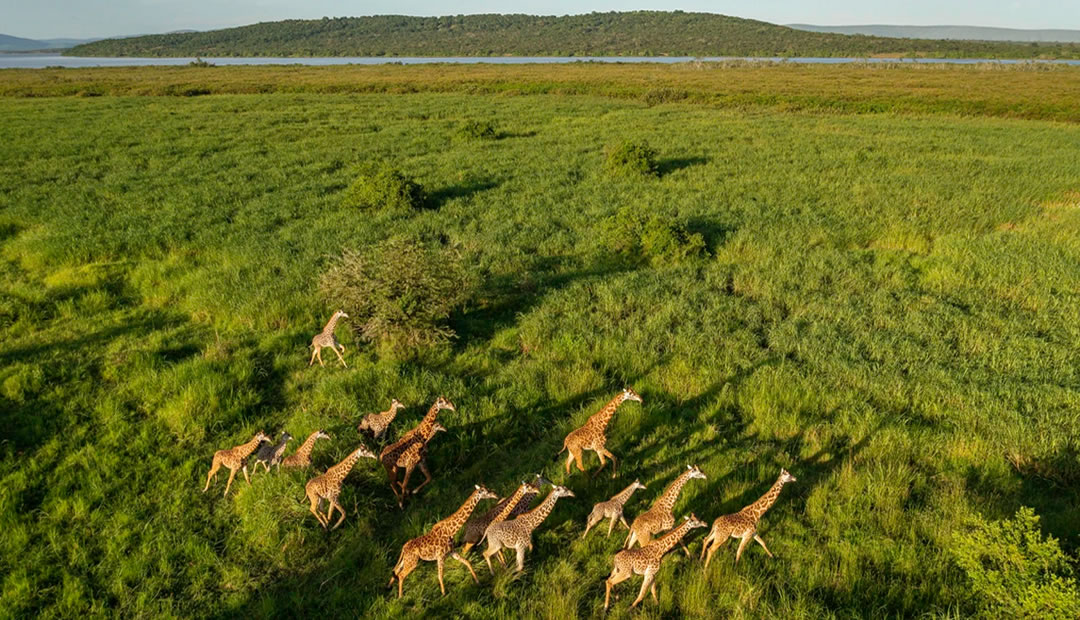
Combining Cultural and Wildlife Experiences in Akagera
In 2014 Akagera initiated the Community Freelance Guides programme to recruit and train members of the local community to become tourism guides in Akagera. Almost two years later, the guides have accumulated extensive experience in the park, had training, both internal and external, in conservation in Akagera and field guiding techniques, some have completed first aid certificates and others have passed their driving tests. All are on their way to becoming skilled professionals and respected guides.
In addition to their work guiding tourists inside the park, the Community Freelance Guides Cooperative have been working on developing authentic cultural experiences to share with park visitors outside of the park. Their knowledge of the communities in which they live and participate in, as well as their experience guiding tourists and identifying their interests, make them well-placed to connect the two. The guides have put together some options for tourist looking for engagement with the local community and a greater understanding of Rwandan culture and tradition.
HERITAGE takes you to a cattle farm to try your hand at milking a cow and learn about the rituals around milk. You will visit the farmers home and see how milk was traditionally kept, preserved or treated, turning it into ghee. Special vessels are still sometimes used to store and drink milk from, and herbs smoked to flavour the amata. If you are interested in LOCAL PRODUCTION, another activity takes you to a honey cooperative to learn both traditional and modern methods of bee-keeping. In the same tour you visit a family producing urwagwa, or banana beer, and can sample the wares at a bar across the road.
The ARTS AND CRAFTS activity will show you how local artisans create their products; Imigongo is an iconic Rwandan art and native to the Eastern province, a family of blacksmiths demonstrate their creative talents and traditional dancers express Rwanda culture through music and movement.
In addition to these cultural activities, the guides have developed a 7-km moderate to difficult walk along a section of the boundary fence line. The entire fence line is walked daily by a team of fence attendants, walk in their shoes for a small section of the 120km boundary fence which plays an essential role in the conservation of Akagera; allowing for the recent re-introduction of lions, reducing human-wildlife conflicts on the park boundary and, in turn, creating community support for the park.
These activities provide opportunities to engage with people going about their daily lives and eager to share their stories. Since the income from these activities is shared with the participating community members it provides additional revenue, directly through tourism, to families living on the boundary of the park, demonstrating the benefits of tourism and creating long-term support for the conservation of Akagera National Park. It doesn’t get more authentic than that!
Read MoreAdventure Caving in Musanze Cave
The Musanze caves in Rwanda offer indepth understanding of geological history and development of the earth. Located in the volcanic region of Rwanda where different lava flow layers dating from 65 million years ago created the Albertine Rift Valley, the caves are two kilometers long underneath.
The caving activity in these caves is fairly new and started only late last year. They are not yet very popular, but part of it can also be blamed on very little promotion. I stumbled upon on this when I reached the reception of Volcanoes National Park a little late for any activity within the park. I had seen a signboard on the way and when I asked them about it they said they organize caving as well.
My Caving experience: Preparations This was not my first caving experience, but it was certainly the most formal one – with full caving gear into a cave full of wild migratory bats. The first time I tried caving was in Meghalaya way back in 2006, and since then never had an opportunity. Unfortunately no images survive from my first experience and I never shared about it on the blog as well.
Anyway, as soon as I was told that I could do caving in the first half of the day, I got super excited and immediately said the fee (USD 30). I was introduced to my guide Mr D, who also became my good friend and gave me company and tips of the next few days that I was in the town of Musanze. I asked him if he needed any help and he simply asked me to walk around, take pictures and wait. The reception is quite scenically located on the foothills of Volcanoes National Park and you can see the most beautiful volcano, Mount Sabyinyo, right behind it. Its so beautiful that I could stare at it for hours…
Anyway within an hour we were ready to leave. It took all this time as they had to charge a number of lights that we had to use within the cave. When I had a look at all the gear we had to carry, I was super impressed and even more excited to go into the caves. Usually one needs a vehicle to go to the caves, but since I had come there on a bike taxi, they graciously offered me a ride in a Park safari vehicle – which is generally used for conservation work and never used by the tourists. I guess, since I was alone and had become friends with the soldiers, they were open to giving me a free ride.
Caving in Musanze Caves After a drive of about 30 minutes we were near the entrance of the cave. We dressed up before going down into the darkness and it added to the excitement. I was given the following:
- Head cap 2. Helmet with light 3. Face cover 4. Gloves 5. Knee caps 6. Boots 7. Hand torch 8. Lots of instructions The cave is actually quite long, though we could only do a short stretch of it which took us about an hour. There is, of course, no light inside the cave and you have to use the head light on the helmet almost all the time. This is good for you, but sharp light disturbs the bats and make quite a bit of noise. Its great when you switch off all the lights inside and stand quietly, the bats also calm down and go silent. You can even feel them flying quite close to you – the winds flapping, strange bat stench and so on.
The last bit of the cave is also the most beautiful. The image at top is from at the end. On the insistence of my guide, I also made this short video about the place. He wanted me to make it so that I can share it with my family and convince them to come to Rwanda for their next vacation.
My Guide – Mr D! His real name was Diogene, but he preferred Mr D. He was my guide to the caves but we quickly became friends, chatting up about Rwanda and India. He also took me to the coolest places in Musanze, lent me his jacket for the trek and called up every evening to ask me about my day!
I took this portrait at a nice and old French cafe in town where we had our lunch after Caving.
Musanze caves during Genocide The caves became prominent during the genocide in 1994. It was used by hapless residents fleeing their killers to hide and save themselves. Many of them lived here for months and made it their home. It must have been quite tough living here – no light, little food and lots of bats. A new walkway is in place now, but back then it was only rocks and uneven terrain. As per my guide, many of those who hid here actually survived.
Travel tips:
- If you are in Musanze, you can take a bike taxi to the Reception of Volcanoes National Park. No prior booking is required. The taxi will cost you FRw 2000.
- A jeep or car is preferred as you can dump all the caving equipment there
- Caving takes about an hour and it not at all tough – its an experience for everyone
- You can carry water and food, but you can’t have it inside the cave
- Cameras are generally useless, unless you intend to use a tripod and take long exposure shot
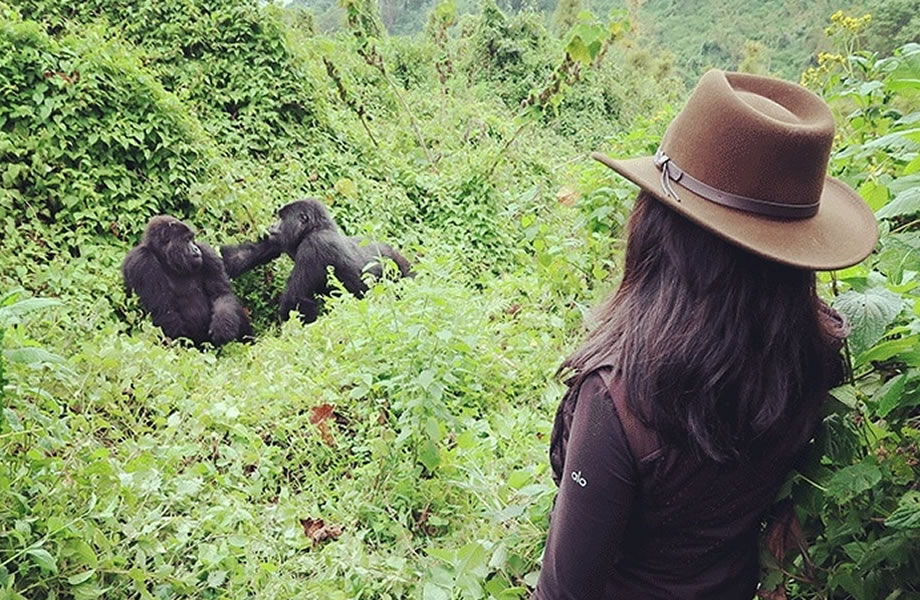
The Success of Gorilla Tourism in Rwanda
Several factors have been attributed to the success of gorilla Tourism in Rwanda and the other country where mountain Gorillas can be visited safely is Uganda, however the Democratic republic of Congo is relatively unstable. With quite a broad client base the demand has been higher than the availability of permits and the good accessibility of the gorillas is an advantage. Rwanda is a small country and the mountain gorillas are fast to be reached within 2 hours from Kigali, the capital city of the Republic of Rwanda as opposed to Uganda which is about 6 hours from the capital city Kampala. There are viable tourists assets which are necessary but not very sufficient, requiring t more infrastructure and to be set up in Rwanda.
A prerequisite is the relative ease of habituating Mountain Gorillas facilitated by the temperate climate. A sustainable Tourism development plan was designed by the republic of Rwanda with the support of the United Nations World Tourism Organization. The Virunga mountain gorilla represent an isolated island population in an upland area surrounded by a sea humanity at some of the highest human densities found on the African continent.
Threats to Mountain Gorillas
Mountain Gorillas are severely threatened by anthropogenic disturbance such as need for agricultural expansion and illegal extraction of resources. Until recent, mountain Gorillas are not hunted down for meat as it was before. Many Mountain Gorillas were killed and other wounded with other groups disintegrating as a result. This resulted in high demand to trap infants which were taken on the black market in the Virunga range. Illegal hunting was mainly motivated by meeting subsistence needs for the poorest people around the Virunga National Park and this pressure presently represents the greatest threat to the survival of the mountain gorilla and the integrity of their habitat.
A key focus for the Contemporary conservation of Mountain Gorillas
There has been a focus of contemporary conservation strategies where the local communities have persistently addresses the local welfare needs to mitigate some of the poverty related conservation threats. This has combined the conservation with the local development through the integrated conservation and development projects. The communities in Rwanda are involved in gorilla tourism in the following ways including; creation of a department for community conservation which is aimed at working with the local education and social infrastructure projects.
The republic of Rwanda has initiated revenue sharing scheme whereby 5 percent of tourism revenues from the park fees are injected into local community projects around the national parks. This has been made possible to ensure that the local people consider the parks as one of their own and it is not known what proportion is shared with revenue represents the budget of the local councils
Benefits of gorilla tourism
The Virunga Mountain Gorilla represents an Isolated Island of Island population in an upland area which is surrounded by sea of humanity at some of humanity at some of the highest human densities found on the African continent. Employment opportunities have been offered to the people of Rwanda through National the national park. The local community have been have been employed as guides, trackers and antipoachers while some privately tour operators have offered community based tourism activities including stays with local family, village walks, banana beer production or even volunteering opportunities in the local communities. As compared to other countries, Rwanda has shown a strong commitment to promote the tourism sector and have developed a clear tourism strategy and a marketed destination. A private sector was involved in the policy sector and dialogue and generally have improved the country’s business environment.
Read More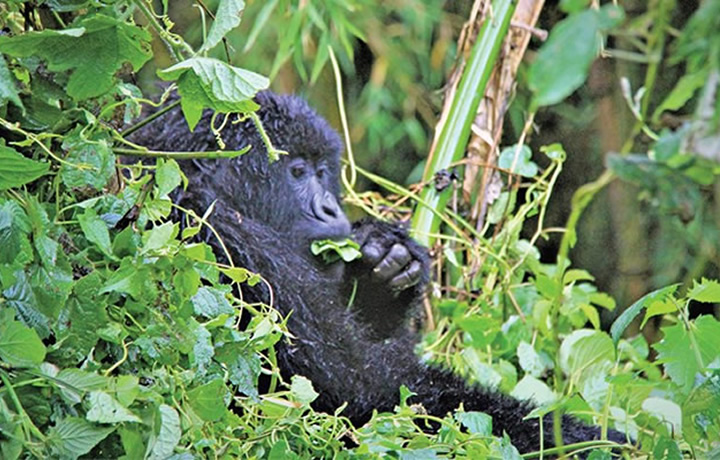
Tracking the Mountain Gorillas in Rwanda
Gorilla trekking is a unique once-in-a-lifetime experience that you should not miss while in Rwanda. This is one of the best rated adventure activities on TripAdvisor and surprisingly, it can be done safely in Rwanda.
On a Rwanda tour you should not miss visiting the Volcanoes National Park, the oldest park in Africa! The park’s history dates back to the creation of the Albert National Park that was created by the Belgians in 1925. This is one of the only four national parks protecting the mountain gorillas.
It is estimated that there are as few as only 900 mountain gorillas left globally. The mountain gorillas are listed as endangered species by the International Union for Conservation of Nature (IUCN). Did you know that there are only three countries where you can see these endangered species? These great apes are only found in the countries of Uganda, Democratic Republic of Congo (DRC) and Rwanda.
The Volcanoes National Park is part of the Virunga Region, the montane forests of Central Africa protecting the mountain gorillas. The region has two other parks that include Virunga National Park in the Democratic Republic of Congo and the Mgahinga National Park in Uganda.
For the past two decades, gorilla tourism has been promoted in these countries most especially Uganda and Rwanda. Today there are several habituated gorilla families that can be visited in these countries. However based on easiness, Volcanoes National Park is the best place to track the mountain gorillas in Africa. It is also safe to say that this very special experience is very rewarding and interesting – giving you up to 1 hour to watch and photograph these great apes.
Planning a Gorilla Trek in Rwanda
There are limited gorilla permits available for gorilla tracking in Rwanda. Today there are ten habituated gorilla groups that can be visited by tourists. Each group is allocated only 8 tourists and the number is limited based on guidelines that were set while planning gorilla tourism as a sustainable tourism activity.
Given that there are less permits available, it is advisable to book a gorilla permit early enough most especially if you are looking to gorilla watching in the peak months of June – September and December – February! Gorilla permits can be booked at the ORTPN offices in Kigali, at the Volcanoes National Park headquarters or through a local tour operator based in Rwanda.
Costs for gorilla permits:
- USD $1500 per person for non-nationals
The fees for gorilla permits are inclusive of park entry fees.
Please note that gorilla trekking requires good physical fitness, stamina and a yellow fever certificate. The trek encompasses visiting some of the most beautiful volcanoes, amongst the Virunga mountains, in the world. Four days and 3 nights, all you need for this fulfilling experience (a good add on to a traditional Safari trip to Tanzania).
Read MoreGishwati Mukura Gazetted into a National Park
Gishwati-Mukura Nature Reserve has officially become Rwanda’s 4th National Park after Akagera, Nyungwe and Volcanoes National Park. This park is known for its fauna and flora such as primates, chimpanzees and more than 60 types of trees.
Gishwati-Mukura National Park is located in Rubavu, Rutsiro, Ngororero and Nyabihu Districts in western Rwanda. Rwanda had only three national parks but the number increased from 3 to 4 parks with the law establishing Gishwati and Mukura National Park which was signed and published in the official gazette on February 01, 2016.
The objective of turning Gishwati-Mukura into a national park is to “ensure that the part of these forests that remains is safeguarded” as explained by Dr Rose Mukankomeje, Director of REMA. Dr. Mukankomeje also asserts that “the new park will contribute to the well-being of the surrounding population as they will find jobs in hotels, guide tourists and sell handicrafts to tourists who visit Gishwati-Mukura Park” .
This law provides that the two parks are composed of the Gishwati forest measuring 1,439.72 hectares and the Mukura forest measuring 1,987.74 hectares. The total area of Gishwati-Mukura Park is 992.48 hectares.
This has been extremely exciting news for Rwanda, and shows a great willingness of the government to help stabilize and protect these hugely important areas and turning the forest into a national park move has increased the number of parks in the country to four. The others are the game-rich Akagera, situated in savannah lowlands in the country’s east; Volcanoes, home to the famous mountain gorillas in the north; and Nyungwe rainforest in south-west, one of the world’s richest ecosystems that is home to several species of primates and birds.
Read More
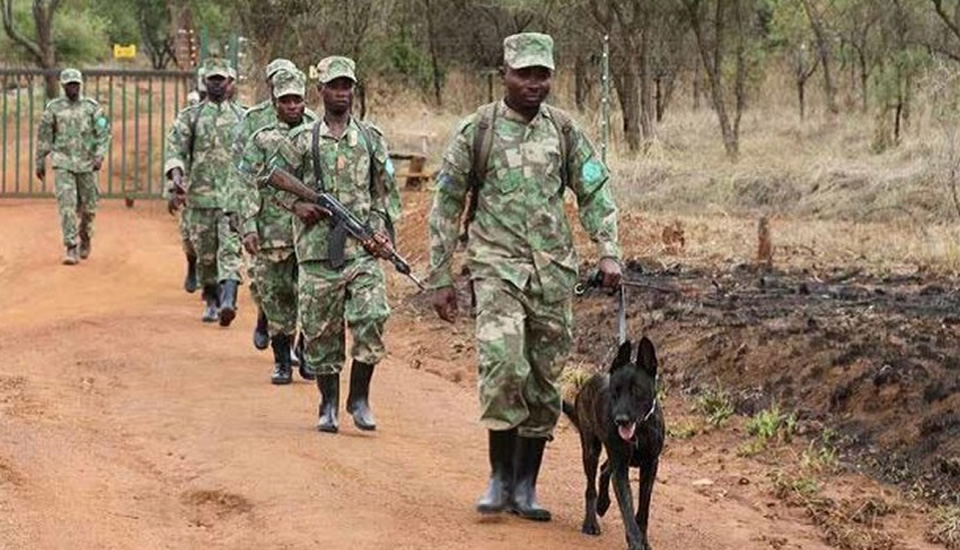
Canine Unit Takes Command
17 dog handlers have graduated after seven months of training to enable them to work with eight highly-trained tracker and restraint dogs in Akagera National Park. The canine unit will provide the law enforcement team with a significant boost in securing the parks and preventing illegal activities.
The eight dogs were a donation to Rwanda from the HGB Foundation early in 2015. They had previously been deployed in Central African Republic. With the dogs already highly trained, handlers were recruited to be trained and operate the canine unit. The intensive course consisted of theory and practical programmes on veterinary knowledge and care of a service dog, the theory of scent, bite work, reinforcement training, obstacle work and tracking in the field. It was important for the handlers to develop a relationship with the dogs so they can understand their signals and read their behaviours. For maximum effectiveness and efficiency, the dogs and handlers need to work together as a team.
Seven of the dogs are Belgian Malinois named Reza, Max, Bruno, Bronco, Gozer, Barrack and Tigo, the eighth is a Dutch shepherd named Duco. All are male and around 3-5 years old, highly trained and experienced in law enforcement for tracking and, where necessary, are also able to restrain an assailant until rangers are able to arrest him. While the dogs have remained in Akagera for the training period, in future they may be deployed across all parks in Rwanda to assist in anti-poaching activities and help to secure the integrity of the national parks.
Law enforcement activities in Akagera continues to show significant improvements with huge reductions in all illegal activities. Snare recovery has dropped from 1,997 in 2013 to just 141 at the time of writing in December 2015. Arrests of poachers has gone from 308 in 2012 to just 6.
These have reduced while patrol coverage has increased and the rangers have been trained and properly equipped to carry out patrols. With the recent return of lions, and the planned reintroduction of black rhino in the near future, the law enforcement team continue to be presented with new challenges and must be able to ensure the protection of the park and animals within. The canine unit will provide the team with a significant boost in anti-poaching efforts to carry on the protection and conservation of Akagera National Park.
Read More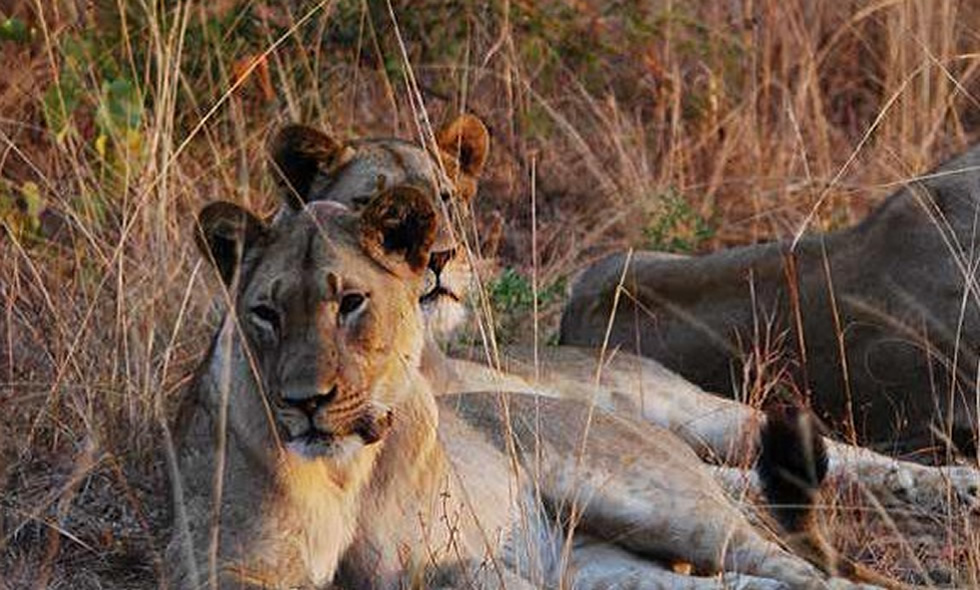
Akagera Lions Settle
After almost a month in the boma in Akagera National Park, seven translocated lions were release from their temporary enclosure on 27th July. These are the first lions to step foot in Akagera, and Rwanda, in over a decade.
The five females came from three different prides; a 10 year old mother and her 18-month old cub, two 3-year old sisters and five-year old single female. They had already spent one month together in quarantine at &Beyond Phinda Private Game Reserve before coming to Rwanda. The males, aged 3 and 4 years old came from Tembe Elephant Park, both parks are in the South African province of KwaZulu Natal. The males met the females for the very first time on arrival in Akagera.
All seven lions were fitted with GPS collars so that their movements could be monitored as they settle into their new home. Intrigue was high on release day; would they leave the boma straight away or stay where it is familiar? Would they stay together as a pride of seven or split up into smaller groups? Their first weeks have been fascinating to follow; encounters with the locals, first successful kills, changing dynamics of the group and the first tourist sightings…
Tempted out by a waterbuck carcass, the females were quick to emerge from their temporary enclosure when the gates opened. They were eager to explore their new home and all five quickly left the boma area traveling west and leaving the males behind. Within days they had encountered a group of 16 hyenas and, feeling outnumbered, they retreated into the western boundary hills. By the end of the first week they had moved over 35kms. They had returned to the lakes and, after several failed attempts, they were finally successful in bringing down a female waterbuck. Adam Bannister was part of the film team following the lions and he observed only one hunt where they really worked together as team. Although they had been together for over two months at this stage, this was the first time they were hunting for themselves as a pride of five, and they had a lot to learn! The lionesses had managed to evade any tourists, despite using the road network to move at night and spending a lot of time just a few metres away from the roads during the day. But then excitement was high a month after the release when the five females were spotted for the first time. Soon after this, the two sisters parted ways with the rest of the group and embarked on their own journey of exploration moving right up to the northernmost tip of the park.
The first weeks for the two males were very different. They have shown more caution than the inquisitive females and for the entire first month they remained on Magashi peninsula, moving not more than 5kms from the site of the boma. The area is roughly 5,000 hectares and surrounded by water on all sides except for a narrow connection to land. Without any roads beyond the boma tourists don’t visit the area and with plenty of game, the reserved males hunted successfully and were content to stay. A month passed before they finally decided to venture from their territory and left Magashi moving west into the Mutumba hills.
Six weeks later, one question still remained; when will they all meet up? Since the males left the boma area they had been crossing paths with both female prides but always days, or several kilometers, apart. Not long after after the males had finally left, the pride of 3 females returned to Magashi and the sisters were at the extreme north of the park. It seemed a rendezvous was far off. However, the males soon returned to familiar territory and one morning we got satellite readings from both the males and the females, less than an hour apart, showing them within a few metres of each other. It was a fitting reunion, on Magashi peninsula where they first met and then parted way six weeks earlier, but far from the end of the story, this is hopefully just the beginning of a new chapter in the story of Rwanda’s Pride.
Follow @AkageraPark on Twitter, Friends of Akagera National Park on Facebook for regular updates.
Sarah Hall sarahH@african-parks.org
Read MoreSeven Lions Released into Akagera National Park
African Parks, in partnership with the Rwanda Development Board, has released seven translocated lions into Akagera National Park. The five females from &Beyond Phinda Private Game Reserve and two males from Tembe Elephant Park, both in South Africa, were brought to Rwanda at the end of June in a ground-breaking conservation effort for the country.
Earlier today, the gates of the quarantine boma were opened to allow the lions to exit the temporary enclosure. A waterbuck carcass was placed outside the gates to encourage them to explore their new home. The first female poked her nose out of the gates within a few minutes, closely followed by three other females, who looked around curiously, unconvinced about their new found freedom, before feasting on the carcass. The youngest lioness was last of the females to emerge and nervously kept her distance in nearby bushes. The two males were much more cautious and did not emerge from the boma while the park and press vehicles were there. These are the first lions to roam Akagera National Park, and Rwanda, for almost 15 years.
Tourists now have the opportunity to see the lions in the wilderness of Akagera, as previously viewing was restricted to park personnel who had been monitoring the lions in the boma. The time in quarantine has allowed the lions to adjust to their new surroundings, bond with each other, and recover from what was likely the longest wild lion translocation in conservation history, taking over 45 hours. The lions have come from different prides; among the females are a ten-year-old mother and her one-year-old daughter, a single five-year-old female and two three-year-old sisters. The males are three and four years old and are unrelated. The lions have been fed every two-to-three days, mainly on impala carcasses, and will now hunt for their own food.
All seven lions are fitted with satellite collars, which will allow the park management to track their movements, and see whether they stay together as a pride or split up as they explore their new surroundings.
The seven lions will be given names by those who generously supported the translocation process, including Bralirwa brand Turbo King, which will name the two male lions. Turbo King covered the lion’s charter flight from South Africa to Rwanda. Other key donors and stakeholders have been given the honour of naming the female lions. The names of the lions will be announced in the near future. African Parks and the Rwanda Development Board are very grateful to our sponsors for their kind contribution to this conservation milestone for Rwanda.
For more information, please contact Sarah Hall, Tourism and Marketing Manager, Akagera National Park on +250 (0) 782 166 015 or at sarahH@african-parks.org.
Akagera National Park
Located in the east of Rwanda on the border with Tanzania, Akagera is 112,000 hectares in size. A river of the same name on its eastern boundary feeds into a labyrinth of lakes that make up the eastern boundary of the park. Rolling grassland and wooded hills make up the western boundary. The park is home to a huge diversity of animal and birdlife, and boasts spectacular scenery.
Akagera is managed through a public-private partnership between the Rwanda Development Board and African Parks, a non-profit organisation that takes on responsibility for the rehabilitation and long-term management of national parks and protected areas in partnership with governments and local communities. African Parks manages ten national parks and protected areas in seven countries: Rwanda, the Republic of Congo, the Democratic Republic of Congo, the Central African Republic, Chad, Malawi and Zambia.
Read MoreRwanda to Host Africa Hotel Investment Forum in 2016
The Government of Rwanda through the Rwanda Development Board, will host the Africa Hotel Investment Forum (AHIF) in 2016 in Kigali. AHIF brings together the leading international hotel investors in Africa with local operators, ministers, government officials and industry experts, to discuss all aspects of hotel investment and operation in Africa.
The decision to host AHIF in Kigali underlines a clear strategy by the Government of Rwanda to attract investment in the tourism sector. Ambassador Yamina Karitanyi, Chief Tourism Officer at the Rwanda Development Board, said: “We see AHIF as an excellent platform to meet many of the most important decision makers and investors, who have the power collectively to influence investment in the hospitality industry in Africa. We are determined to build relationships and showcase Rwanda as the right place to do business and therefore we believe that hosting the event will create an opportunity for local hotel developers to forge partnerships with investors.”
In signing the agreement to bring AHIF 2016 to Kigali, all parties committed to pursuing five goals, which include:
- Supporting hotel and infrastructure development within Rwanda and across Africa
- Promoting Africa to the international hotel investor and operator community
- Educating the hotel investment community about the tourism potential of Africa
- Facilitating networking between African stakeholders and the international community
- Supporting Rwanda’s ambition for growth through travel & tourism
In Africa as a whole, Travel & Tourism is seen as a highly attractive growth industry. According to the World Travel & Tourism Council (WTTC), it is responsible for 8.1% of GDP and it is forecast to rise at 4.9% per annum until 2025.
Similarly, Rwanda’s tourism sector continues to grow positioning itself as the leading foreign earner for the country. For the financial year 2013 to 2014, the sector registered a three per cent increase in the number of visitors to Rwanda. These numbers grew from 1.14million visitors to 1.2 million visitors also accounting for an increase in revenue from $293.4m in 2013 to $303m in 2014.
In Rwanda, leisure has been a major driver of Rwanda’s tourism industry. Currently, the country is focusing on Meetings Incentives Conference and Exhibitions/Events (MICE) tourism, capitalising on safety, developed infrastructure, accessibility and new entrants in the hotel industry such as the Marriott, Radisson Blu, Radisson by Park Inn, Sheraton, Golden Tulip, Kempisnki and Zinc, amongst others. Hosting the AHIF will no doubt contribute growth of Rwanda as a leading MICE destination in the region. Later this year, Rwanda will host Interpol AGM, World Economic Forum on Africa in 2016 as well as Africa Union Summit in 2016.
Jonathan Worsley, Chairman, Bench Events, the company that organises AHIF and other top international hotel investment conferences, said: “I know of at least three hotel projects in Rwanda that came about as a consequence of a conversation at AHIF.I have every confidence that the proactive approach that is being displayed by the Rwanda Development Board will pay off, as all the major hotel chains are seeking new opportunities in Africa – and one of the most crucial issues for them is to find public sector partners that are making a serious effort to speak their language.”
By moving to a different African city every couple of years, AHIF will help to showcase high-growth destinations across the continent as a whole. Jonathan Worsley, Chairman of Bench Events concluded: “The African economic growth story is becoming well-known. At around 5% per annum, it is a multiple of developed economies and that is appealing to the international business community.”
In 2014, the event took place in Addis Ababa and attracted over 500 participants from more than 40 countries who represented over 400 companies. AHIF ‘15 will again take place in Addis, at the Sheraton hotel on 30th September – 1st October, where the number of delegates is expected to increase substantially on last year.
Several networking contacts made at AHIF have since resulted in promising new business relationships and the event attracted considerable media attention, with around a hundred reporters in attendance from major local and international news organisations.
Read More